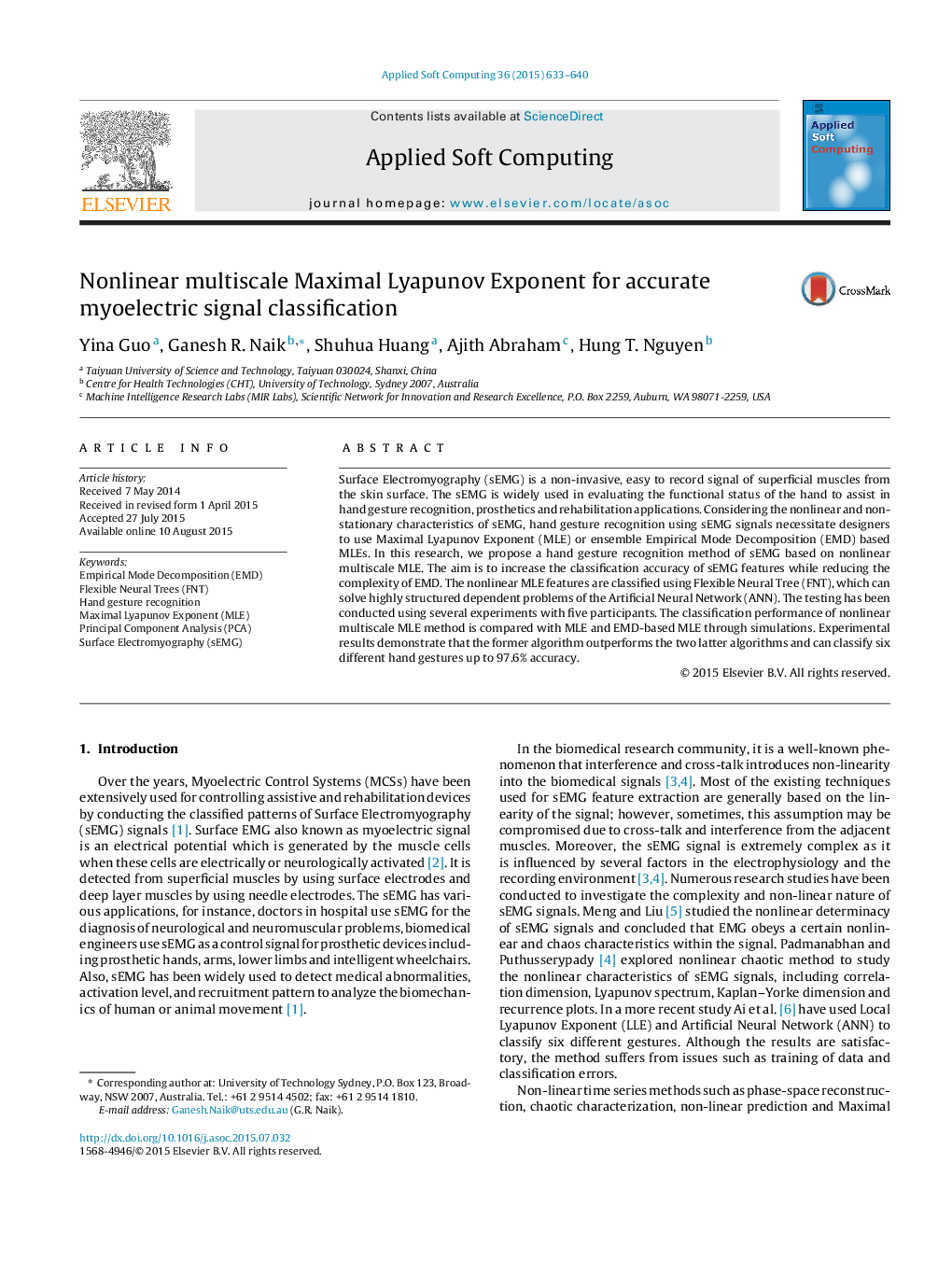| Article ID | Journal | Published Year | Pages | File Type |
|---|---|---|---|---|
| 494840 | Applied Soft Computing | 2015 | 8 Pages |
•We use nonlinear and non-stationary features of sEMG to identify various gestures.•In order to reduce the complexity of EMD nonlinear MLE method is used.•In order to improve characteristic stability we use a method based on nonlinear MLE.•The proposed method classifies six different hand gestures up to 97.6% accuracy.•The method can be used for prosthetics and other rehabilitation applications.
Surface Electromyography (sEMG) is a non-invasive, easy to record signal of superficial muscles from the skin surface. The sEMG is widely used in evaluating the functional status of the hand to assist in hand gesture recognition, prosthetics and rehabilitation applications. Considering the nonlinear and non-stationary characteristics of sEMG, hand gesture recognition using sEMG signals necessitate designers to use Maximal Lyapunov Exponent (MLE) or ensemble Empirical Mode Decomposition (EMD) based MLEs. In this research, we propose a hand gesture recognition method of sEMG based on nonlinear multiscale MLE. The aim is to increase the classification accuracy of sEMG features while reducing the complexity of EMD. The nonlinear MLE features are classified using Flexible Neural Tree (FNT), which can solve highly structured dependent problems of the Artificial Neural Network (ANN). The testing has been conducted using several experiments with five participants. The classification performance of nonlinear multiscale MLE method is compared with MLE and EMD-based MLE through simulations. Experimental results demonstrate that the former algorithm outperforms the two latter algorithms and can classify six different hand gestures up to 97.6% accuracy.
